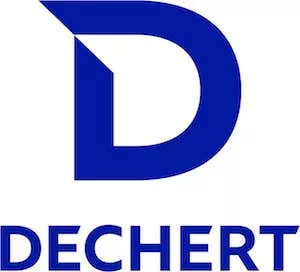- with Finance and Tax Executives
- with readers working within the Advertising & Public Relations and Securities & Investment industries
- in United States
Key Takeaways
- Chairman Atkins values a Wells process that is "fair and transparent."
- Early engagement by Enforcement staff to discuss the direction of an investigation is encouraged, as well as the submission of "white papers" to help assure that the staff is not operating under a mistaken view of the facts.
- As part of the Wells process, Enforcement staff will generally be expected to provide defense counsel with testimony transcripts and other key documents that support the potential charges.
- Enforcement staff will now provide potential respondents and defendants with "at least four weeks" to complete Wells submissions.
- Senior Enforcement leadership will meet with defense counsel prior to making a recommendation to the Commission.
- The Commission has restored its prior practice of simultaneously considering settlement offers and related waiver requests.
Introduction
During a Keynote Address at the 25th Annual A.A. Sommer, Jr. Lecture on Corporate, Securities, and Financial Law on October 7, 2025, SEC Chairman Paul Atkins described a series of reforms to bring more transparency to the workings of the SEC's Division of Enforcement (the "Division") that were previewed by the Chairman and SEC staff at this year's SEC Speaks conference.
Chairman Atkins stated that the Wells process "should be viewed as an extension of due process and fundamental constitutional rights that play an integral role in protecting citizens from a powerful government agency that could become policeman, prosecutor, judge, jury, and executioner all in one." With that vision in mind, he outlined certain "improve[ments] and refine[ments]" to the Wells process and re-affirmed his focus on pursuing "genuine harm and bad acts" rather than "consum[ing] excessive Commission resources" on enforcement actions with no investor harm.
The Wells Process
Chairman Atkins explained that the Wells process remains "an essential part" of the Commission's enforcement program because it creates "open, informed, and thoughtful dialogue" between the Commission and market participants.
The Wells process benefits both the Commission and potential respondents and defendants. On the one hand, it provides Division staff with "the full context of the relevant facts, problems with legal theories or the use of legal authorities, potential defenses, and policy or programmatic reasons not to pursue an enforcement action." On the other hand, Wells notice recipients receive information about potential charges and the evidentiary basis for those charges.
Chairman Atkins acknowledged that the SEC staff "do not always get things right the first time," and views the Wells process as "a valuable procedural device that helps to guard against plain mistakes, extreme legal theories, misinformation, biases, and conflicts of interest." In other words, the goal of the process is accuracy—making sure the Commission "get[s] it right."
With these principles in mind, Chairman Atkins outlined his vision for the Enforcement Division's Wells process moving forward.
Forthrightness
In the spirit of the Division striving to achieve accuracy, Chairman Atkins said the Division will not engage in a "gotcha game" when interacting with potential respondents and defendants. To the contrary, the main objective of the Wells process is "to get to the truth of the matter and hold people accountable in major, federal cases for significant violations." Therefore, a "fair and transparent" Wells process will ensure Commission leadership fully understands the positions of both the Division staff making the enforcement recommendation and the Wells notice recipient.
Timing of Wells Submissions
Moving forward, Division staff will provide potential respondents and defendants with "at least four weeks" to complete Wells submissions. On the flip side, there should not be delays in making submissions or unreasonable requests of Division staff, as the foundation of the Wells process is good faith by both sides.
Access to Evidence
As mentioned during the SEC Speaks conference earlier this year, Chairman Atkins reiterated that Division staff must be forthcoming about sharing the investigative file with potential respondents and defendants. This information includes transcripts, documents, and other parts of the investigative record. Chairman Atkins cautioned, though, that Division staff still must adhere to limitations when applicable, such as information that would identify whistleblowers or implicate a parallel criminal investigation.
Meetings with Division Staff
Senior Division leadership will continue to meet with defense counsel prior to making an enforcement recommendation to the Commission. However, Chairman Atkins expressed that Division staff should engage more with defense counsel during earlier phases of the investigation "to discuss the direction of an investigation," including when there is a belief that "the staff is operating under a mistaken view of the facts."
White Papers
Chairman Atkins noted the value of white paper submissions in addressing concerns over certain legal or factual issues. These submissions are particularly helpful "in cases where a potential respondent or defendant feels obligated to make a public disclosure of a Wells notice or to save on the costs of making a Wells submission." He also confirmed that white papers, like Wells submissions, will be provided to the Commission for review and consideration.
Commissioner Review
Commissioners currently receive every Wells submission, both in settled cases and in contested ones. Chairman Atkins stressed that the Commissioners should read the submissions, even if the recommendation has changed from what was included in the Wells notice.
Simultaneous Consideration of Settlement Offers and Waiver Requests
Chairman Atkins also announced reforms to "a close cousin" to the Wells process—"the simultaneous consideration of settlement offers and related requests for waivers from collateral consequences resulting from enforcement actions."1 Under his predecessor, Chair Gensler, the Commission abandoned the practice of reviewing these two actions in tandem. As a result, the enforcement staff "negotiated settlements in one silo," and the relevant policy division "considered waiver requests in another."
Chairman Atkins believes simultaneous consideration will be more efficient because it will "avoid the pitfalls of fragmented review at different times." The increased efficiency will be fairer to potential respondents and defendants because it will ensure the Division operates more transparently and "with the procedural rigor that engenders confidence in" the Commission's work.
The Chairman's remarks make clear that the Commission may determine not to accept a simultaneous offer of settlement and waiver request. For example, the Commission may decide to consider the settlement and waiver requests independently. Should the Commission accept the settlement offer, but decline to approve the waiver request, the staff will promptly notify the prospective respondent or defendant who then must promptly notify the staff (typically within five business days) of its agreement to move forward with that portion of the settlement offer accepted by the Commission. Absent any such agreement to the partial terms of settlement, the staff may re-evaluate the settlement terms in their entirety, and a litigated proceeding may follow.
Enforcing the Securities Laws with Fairness and Transparency
Chairman Atkins closed by noting the following additional enforcement processes, among others, that promote fairness and transparency: (i) imposing penalties that are appropriately tailored to the misconduct at issue, within statutory limits, and avoid further shareholder injury; (ii) issuing termination and closing letters to those involved in SEC investigations; (iii) clearly explaining the process and standards for seeking reinstatement from an associational or penny stock bar; and (iv) establishing the right incentive structure by not rewarding Enforcement staff only for bringing an enforcement action but also for determining not to recommend an action.
Conclusion
Under Chairman Atkins, the Wells process will remain a core feature of the SEC enforcement process. However, potential respondents and defendants should expect Division staff to be more open with defense counsel when it comes to sharing the evidentiary basis for investigations, providing more time for Wells submissions, and engaging with Division staff early in the investigation. This increased transparency will also be evident in other enforcement processes. Chairman Atkins believes these reforms will reinforce the public's trust in the Commission and protect its core mission of "protecting investors; maintaining fair, orderly, and efficient markets; and facilitating capital formation."
Footnote
1. Paul S. Atkins, Statement on Simultaneous Commission Consideration of Settlement Offers and Related Waiver Requests (Sept. 26, 2025) (the "Statement").
The content of this article is intended to provide a general guide to the subject matter. Specialist advice should be sought about your specific circumstances.






